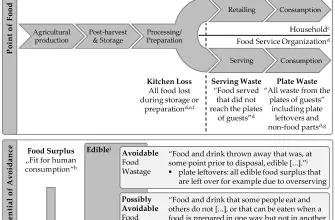Understanding the world of Standard Occupational Classification (SOC) codes can be a daunting task. These codes, used by federal statistical agencies to classify workers into occupational categories, are a crucial part of many processes, from immigration to job classification. This guide aims to unravel the complexities of SOC codes, providing a comprehensive understanding of skilled occupations and their corresponding codes. We’ll delve into specific codes like the software engineer SOC code and the product manager SOC code, explore what primary occupation means, and even touch on state-specific codes such as Washington SOC codes and Indiana occupational codes.
What is a SOC Code?
A SOC code, or Standard Occupational Classification code, is a unique code assigned to each occupation. It is used by federal agencies to classify workers into occupational categories for the purpose of collecting, calculating, or disseminating data. All workers are classified into one of over 820 occupations according to their occupational definition. To facilitate classification, occupations are combined to form 23 major groups, 96 minor groups, and 449 broad occupations. Each broad occupation includes detailed occupation(s) requiring similar job duties, skills, education, or experience.
Understanding SOC Codes
Each SOC code is made up of six digits. The structure is as follows:
- The first two digits represent the major group (e.g., 15-0000 for Computer and Mathematical Occupations).
- The third and fourth digits represent the minor group (e.g., 15-1100 for Computer Occupations).
- The fifth and sixth digits represent the broad and detailed occupations (e.g., 15-1132 for Software Developers, Applications).
For example, the software engineer SOC code is 15-1132, where ’15’ represents the major group of Computer and Mathematical Occupations, ’11’ represents the minor group of Computer Occupations, and ’32’ represents the detailed occupation of Software Developers, Applications.
State-Specific SOC Codes
Some states, like Washington and Indiana, have their own set of SOC codes. These Washington SOC codes and Indiana SOC codes are used for state-specific data collection and analysis. For instance, the Washington SOC code is required information for certain state processes. Similarly, Indiana SOC codes are used for processes specific to Indiana.
Skilled Occupations and Skill Levels
Skilled occupations refer to jobs that require a certain level of skills, education, training, or experience. These occupations are often classified into different skill levels. For example, skill level 2 occupations typically require a bachelor’s degree or higher qualification, at least two years of relevant experience, or both.
Occupation Codes and Immigration
SOC codes play a crucial role in immigration processes. For instance, the skilled worker visa eligible occupations and codes list is based on SOC codes. Each occupation on this list has a corresponding SOC code, and only those occupations are eligible for the skilled worker visa.
Occupation Codes and Job Classification
Employers also use SOC codes for job classification. For example, the project manager SOC code is used to classify project managers, and the product manager SOC code is used for product managers. Similarly, the pharmacy assistant NOC code skill level is used to classify pharmacy assistants based on their skill level.
Conclusion
Understanding SOC codes can be complex, but it’s crucial for many processes, from immigration to job classification. Whether you’re an employer classifying jobs, a worker trying to understand your occupation code, or an immigrant looking at the skilled worker visa eligible occupations and codes, understanding SOC codes is essential. This guide has provided a comprehensive overview of SOC codes, but remember that each state and occupation may have its own specific codes and requirements.









